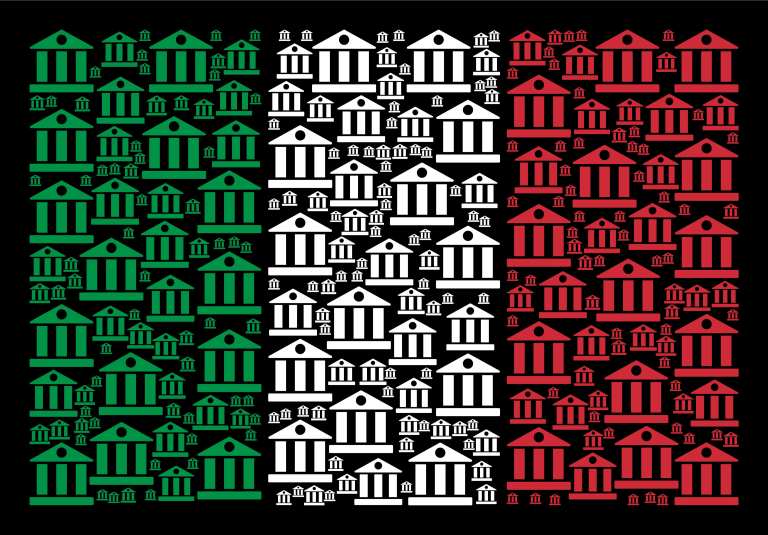
To get a sense of the present state — and future — of instant payments, look to Italy. It has pulled ahead of its EU neighbors in developing real-time payments technology and in recruiting banks to adopt it.
It’s a trend that has been encouraged by the Italian Banking Association, whose official role is to “represent, safeguard and promote the common and legitimate interests of its members, undertaking initiatives for the orderly, stable and efficient growth of the banking and financial sector in a competitive framework, consistent with the national and European regulation.”
These days that “stable and efficient growth” has a lot to do with real-time payments. And as Rita Camporeale, Head of Payments Systems at the Italian Banking Association (ABI), told PYMNTS’ Karen Webster, the pandemic has accelerated the embrace of instant payments that flow directly between banks.
As Camporeale told Webster, Italian banks were among the first to adopt the SEPA instant credit transfer schemes, back in November 2017. It has clarified the banking processes, but RTP is hardly ubiquitous within Italy, much less across the Eurozone. But progress has been significant: At present, she said, there are about 260 banks adhering to the schemes, which means more than 60 percent of payment service providers in the country – and by extension, the percentage of accounts “covered” by instant payments functionality is about 85 percent, as measured in bank clients.
Another few dozen banks will be joining the instant payments scheme this year, said Camporeale, which pushes percentage of accounts that could use instant payments to 90 percent by the end of 2021.
“Considering that it’s not mandatory” for FIs to join the SEPA scheme, said Camporeale, “it’s a good result.”
Another, continued tailwind should come from the fact that the maximum payment amounts, as allowed under the scheme, have been increased as of last year, and now stand at 100,000 euros, up from 15,000 euros previously, as banks fine-tuned their AML and anti-fraud systems. That increase, predicted Camporeale, should increase instant payments adopted by the business sector.
“We already do see an increase in the number of instant payments,” noted Camporeale, where in the third quarter the percentage of payments done instantly stood at 7.5 percent, a jump from the three percent seen in the previous year’s comparable period. That increase has been driven by P2P payments, where parents are sending money to their children, and, perhaps not surprisingly, tech-savvy younger demographics are sending money to one another using banking apps.
Use cases are also developing among small- to mid-sized businesses seeking to improve their cash management practices, moving money between accounts within those firms. As Camporeale said, “smaller enterprises are quite interested also in instant payments for their own internal cash management.”
There’s also the benefit of speeding payments between buyers and suppliers, particularly in industries where direct debit has historically been an inherent part of the business model, such as in the oil sector. Companies find value in the more robust information flows that accompany faster payments, said Camporeale, which let CFOs and treasurers know just when funds will arrive.
A Leapfrog To Instant – Or Room For Cards, Too?
The question remains as to whether there will be a leapfrogging from cash to instant payments, bypassing cards along the way. There will be room for payments that ride the card network rails, she said, in addition to direct account-to-account transactions.
At present, said Camporeale, card payments are “booming” in the wake of the pandemic and the pivot to shopping online. She noted that contactless card transactions stood at 35 percent of transactions before COVID-19; that percentage recently stood at 55 percent. Contactless card payments will likely remain popular even after the pandemic.
“Mobile app usage is very high, and so, also, is the use of digital wallets,” said Camporeale. Statistics show, she said, that in the first quarter of the year, there was a more than 50 percent increase in transactions initiated via mobile banking (at the expense of PCs at home). The utility of apps and payments inside an app (with attendant integration of loyalty and other offers and promotions) will ultimately drive consumer demand for instant payments, and new revenue streams for banks.
The FIs, in turn, should consider making special offers for users and incentivizing low-value, high-frequency transactions — including cash back for consumers and tax rebates for merchants.
“Everyone asks about how to move Italians out of cash,” she added, “and we say it’s a matter of incentivizing them.”
Instant payments will also hasten the movement out of cash. The shift will be more pronounced, said Camporeale, as instant payment schemes globally become interoperable, and the cross-border possibility of exchanging instant payments at the point of sale (indeed, the point of interaction) become a more firmly entrenched reality.
Looking ahead, she said, banks are especially interested in leveraging the newest offerings in the payment scheme: Request to pay. Though Italy, in particular, has been a country where bill payment has been an activity marked by long lines at the post office as people send paper checks, people are becoming more comfortable with paying bills online (especially as the pandemic continues).
“Request to pay could be considered to be one of the other pieces of the puzzle that will make the whole payments market more innovative, together with instant payments,” Camporeale told Webster.